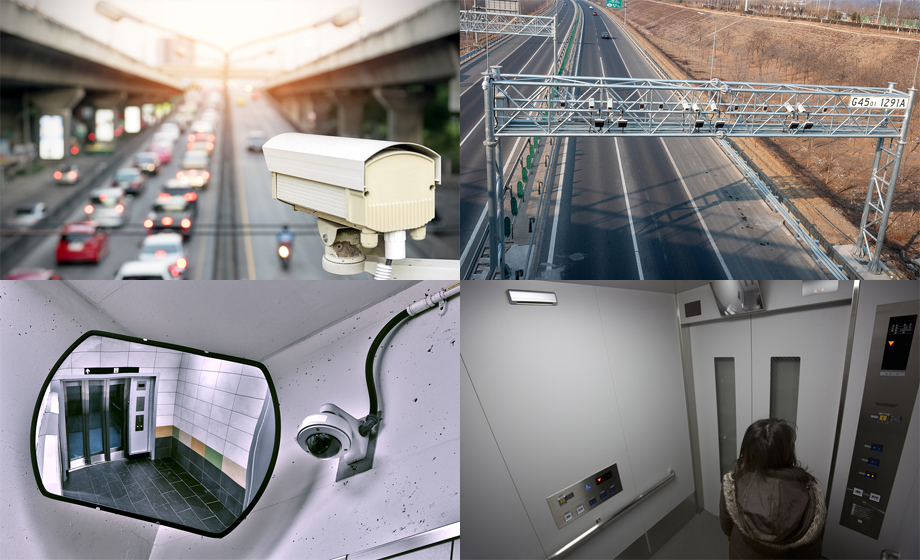Long-distance wireless transceiver module Expressway/elevator monitoring video transmission system, the status quo of the expressway monitoring industry, in order to further improve the efficiency of expressway management, the traffic safety supervision department of each road section, the traffic safety supervision department, and the intersection install surveillance cameras, and obtain road access through surveillance cameras. Conditions and traffic flow, accurately manage highways. The long-distance wireless transceiver module monitoring system makes the relevant processing of the traffic safety supervision department more convenient, fast and accurate, and ensures rapid and timely response to emergencies.

Expressway monitoring industry needs, expressways usually have the characteristics of good routes, large traffic volume, and fast traffic speed, which are good advantages under normal circumstances, but in case of heavy traffic volume, the weather is bad, such as rain and fog weather , if advanced regulatory measures are not taken, it is easy to cause traffic jams and even induce traffic accidents. Therefore, it is necessary to deploy the entire monitoring system on the highway.
However, because the highway is far away and the terrain is complex, it is not conducive to wiring, so the wireless video monitoring of the long-distance wireless transceiver module is undoubtedly a better choice. Therefore, it is a good solution to design a set of dedicated wireless video surveillance solutions for expressways.
Elevator long-distance wireless transceiver module wireless transmission scheme, the status quo of the elevator monitoring industry, most common elevator safety monitoring systems are still traditional wired video monitoring systems. The system uses the elevator cable to provide power for the related equipment in the elevator, and transmits the surveillance video in the elevator and the alarm signal of the accident to the building security center, so that one cable can be used for multiple purposes.
However, this model has a disadvantage. That is, as the elevator continues to run, the cable will continue to wear and tear. If it is not maintained in time, the replacement will lead to the breakage of the accompanying cable. Therefore, the need for regular renewal and maintenance becomes the periodic work of the elevator, which increases the maintenance cost.
In addition, if the accompanying cable is damaged, if the elevator elevator fails, the surveillance video in the elevator cannot be transmitted back to the security center through the cable, and the security personnel cannot obtain the internal situation of the elevator from the monitoring system, hindering elevator maintenance and rescue work for passengers trapped in the elevator car .
To meet the needs of the elevator monitoring industry, the long-distance wireless transceiver module wireless video monitoring system is a good choice to solve the inability to obtain monitoring video images due to cable breakage in the elevator. The wireless video monitoring system transmits video signals through wireless microwaves, and is easy to install and maintain, with strong anti-interference ability and low maintenance cost.
In order to improve the safety performance of the elevator, the wireless video monitoring scheme of the long-distance wireless transceiver module of the elevator is designed to contribute to the safety of elevator passengers.
The advantages of long-distance wireless transceiver module wireless transmission system:
① The installation is simple, no wiring is required, and measures are taken according to local conditions.
②Short construction period, saving time and effort, and simple maintenance.
③ Wide application range, good stability and long transmission distance.
④High flexibility, easy to expand, not easy to fail.
Highway, elevator wireless transmission system structure, the system can be divided into two situations:
(1. Using IP camera)
1. Front-end - IP camera: monitor the situation in real time.
2. Mid-end - wireless transmission equipment: IP cameras generally use digital wireless equipment, and digital wireless transmission equipment is generally used to monitor the sending and receiving of video images. The transmitting end is installed at the bottom of the elevator box, and the antenna is downward; the receiving end is installed at Bottom of the elevator shaft, with the antenna facing up.
3. Back-end - switch + surveillance display + network hard disk video recorder (NVR): used to display and store surveillance video images.
(2. Use an analog camera)
1. Front-end - analog camera: real-time monitoring of the internal situation of the elevator, the installation method is the same as above.
2. Mid-end - wireless transmission equipment: Analog wireless transmission equipment is generally used for analog cameras, and digital wireless transmission equipment is generally used to monitor the sending and receiving of video images. The installation method is the same as above.
3. Back-end - surveillance display + hard disk video recorder (NVR): used to display and store surveillance video images.



